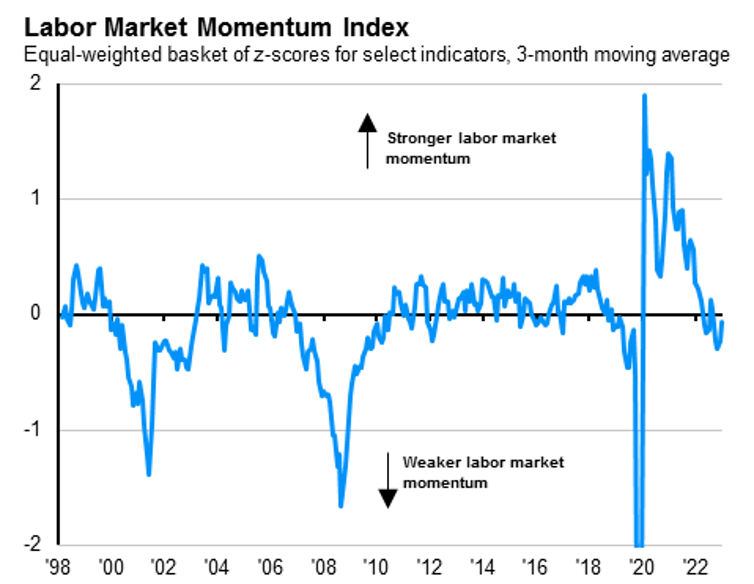Last week the unemployment numbers were released by the Commerce Department for the month of June. JP Morgan, one of the Portfolio Strategists we utilize for client accounts, discussed in their Weekly Market Recap today about how the jobs market, which has remained strong despite rising interest rates, may be beginning to cool…
The U.S. economy has proven to be more resilient in the first half of 2023 than many expected, as strength in the labor market has helped support consumption. But how much momentum does that labor market have? This week’s chart looks to quantify labor market momentum in one number by analyzing
seven key indicators: private payrolls, average hourly earnings, the US Composite PMI Employment Index, the Conference Board Labor Differential Index, initial jobless claims, job openings and the unemployment rate. While the labor market remains a bright spot despite higher interest rates, it seems that this part of the economy is beginning to come off the boil.

Last week’s data confirmed that, while still tight by historical standards, the labor market is beginning to cool. After surging last month, JOLTS job openings fell to 9.8M, bringing the ratio of openings to unemployed workers to 1.6, its lowest level since October 2021. In contrast to this weakening signal, the quits-to-layoffs ratio rose to 2.58 on the back of rising quits. While still elevated, this is 23% below last
year’s peak. Elsewhere, nonfarm payrolls rose by 209K in June, falling short of expectations and slowing compared to May. The details were a bit mixed; a tick down in the unemployment rate to 3.6% and tick up in wage growth to 4.4% highlighted continued strength, but a material downward revision to job growth in April and May, and the slowest pace of private employment gains since 2020, confirmed that
momentum is fading.
Looking ahead, the labor market should continue to normalize, and payroll growth should moderate as labor demand cools. While this week’s data did little to change expectations for the July FOMC meeting, an increasingly balanced labor market implies slower wage growth, which should allow inflation to keep drifting lower and reduce pressure on the Fed to maintain its hawkish messaging.





